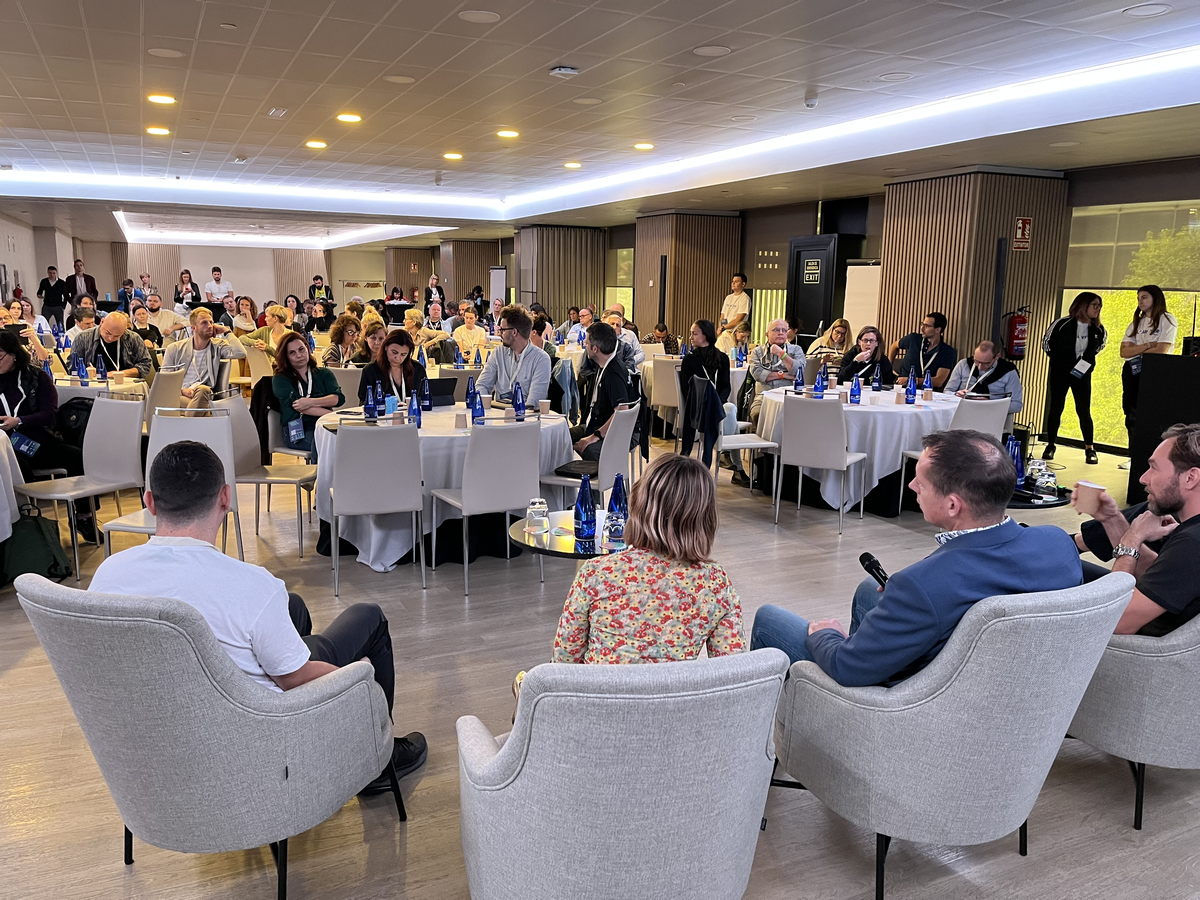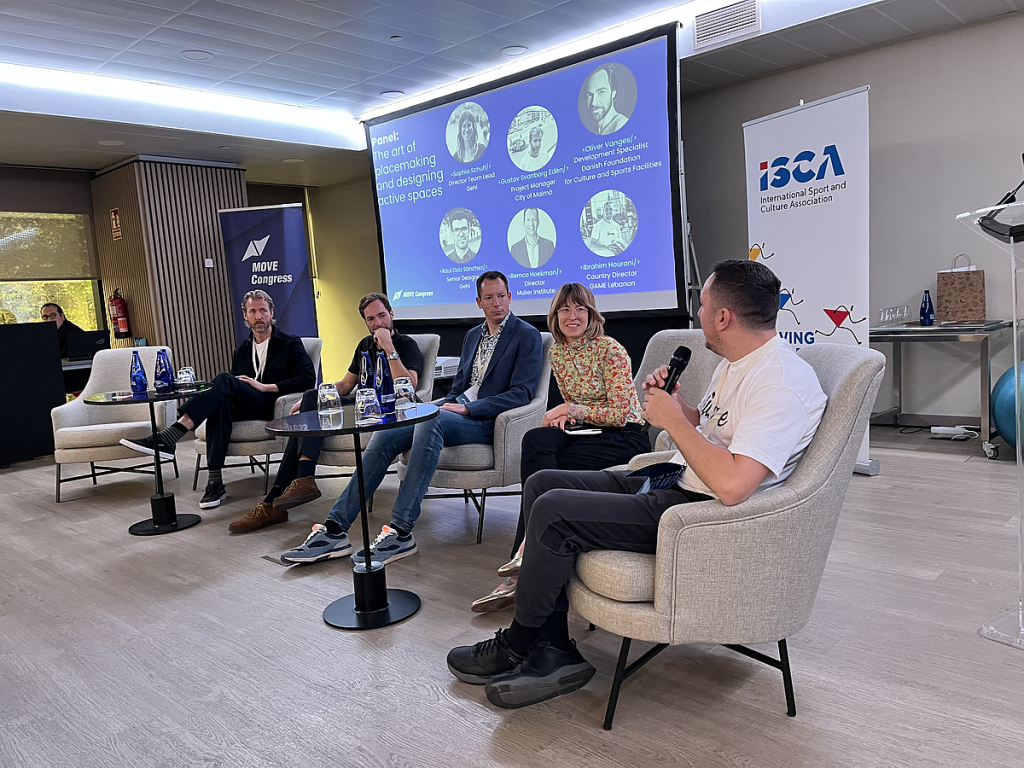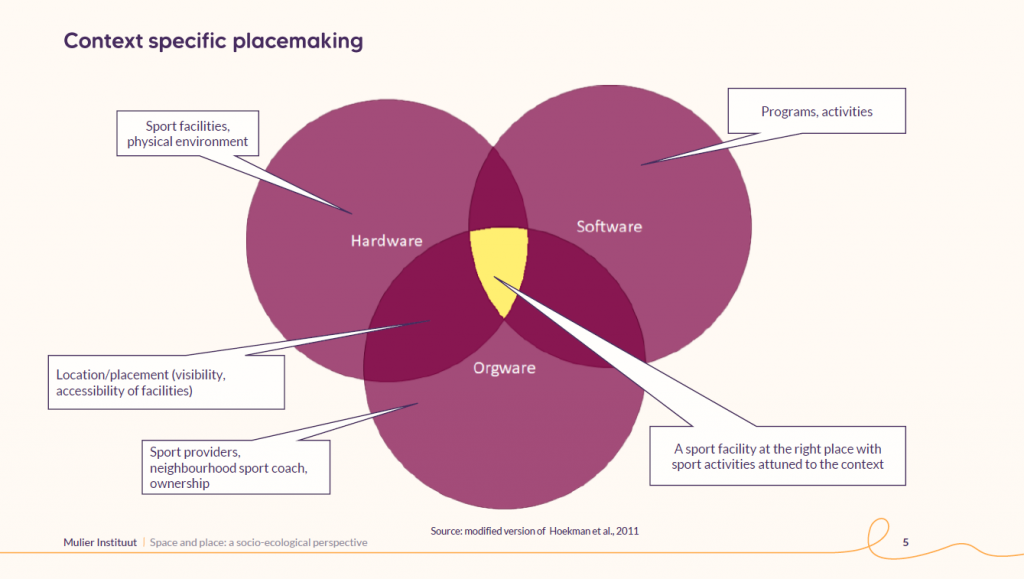“They don’t know” and “you don’t know, either” might seem like strange confessions to make when embarking on a placemaking project, but this was the message that echoed from speaker to speaker. Don’t assume that you understand what your target group wants or needs. And you might not find out by asking them, either. You need to observe them and work with what you discover.
Don’t limit your ideas to “sport” – let people play
Even though this MOVE Congress track was born out of an EU-supported project called Placemaking and Sport and the expert panellists specialise in sports facilities and programmes, they encouraged the audience to think of more than ‘sport’ when (re)designing public spaces for people to be active. “[Try to make them] less ‘sports-coded’ and more of an invitation,” Oliver Vanges said.
Gustav Svanborg Edén gave the example of the Malmö skate sculptures built by the sea, which, despite being built for skateboarding, are so ambiguous in form that they have become a climbing and sliding magnet for children as well.
Avoid cut-and-paste approaches – always customise
Ibrahim Hourani discovered from experience that you can’t cut a GAME street sport facility design directly from Denmark and paste it in Lebanon. And Oliver Vanges notes that there is an abundance of placemaking toolkits out there, but you can’t expect communities around the world to be able to apply these directly to their own contexts. Understanding the space, context and community is key to customisation, and this links back to understanding the target group.
Repurpose rather than build
“The best new sports facilities are the ones that never get built,” Vanges once said as a show-stopping introduction to an international sports conference presentation. He and Gustav Svanborg Edén reiterated this point in Madrid by showing the funkiest examples from Denmark (a rooftop functional training facility above a parking tower) and Sweden (an old brewery in Malmö). Don’t build a brand new facility for the sake of it – seek out disused buildings or spaces and use your imagination to repurpose them. Can old industrial buildings become new sports facilities? Or can you pitch your idea for a facility “as an add-on to an existing infrastructure project,” Svanborg Edén asks?
Respect the public and share the space
But, of course, repurposing existing infrastructure, particularly in cities or residential areas, may not be a popular decision if it threatens to disturb the peace, as Svanborg Edén has found whilst creating places for skateboarders in Sweden. He says it is important not to address public concerns openly and make sure residents can share the space comfortably with the target group. “Why are they [the residents] complaining? It’s probably because they’re feeling disenfranchised from the process. They feel that someone is coming into their neighbourhood and they’re scared of it. So there are different ways to approach that.”
Give your target group a reason to stay in the place
Multi-functional places can be an effective way to welcome a broad range of community members into a public space. But it can be tempting to try to cater for too many people, which can ultimately deter them from the place if it becomes too messy or chaotic.
That’s why Gehl likes to play with the notion “Can we make a place sticky?” to test their ideas and find out if they are successful. Sophia tells, “we measure the amount of time people stay in a place before and after the intervention.”
Money doesn’t necessarily create the best places
“It’s not about the money; it’s about paying attention to the first phase of the design,” Oliver Vanges says, showing pictures of expensive (and empty) projects. “Things don’t happen on their own, even if you throw lots of money at it.”
Remco Hoekman agrees that money should not be the main driver or end goal for a placemaking project. And that success should be measured by the social impact it achieves.
“I think most of the effect is on the social aspects – bringing people together and the cohesion of society taking ownership of their own environment,” he says. “And that’s hard to put a monetary value on. But if you go to politicians, basically that is why they exist, because they are there for society and this is what they should embrace. It’s difficult to monetarise because it’s far better than money, and that should be the message to politicians.”


